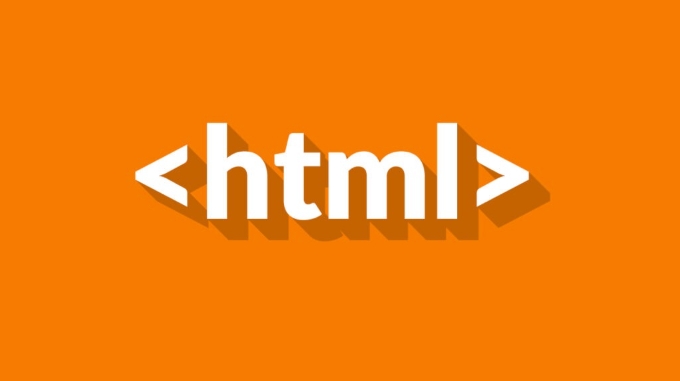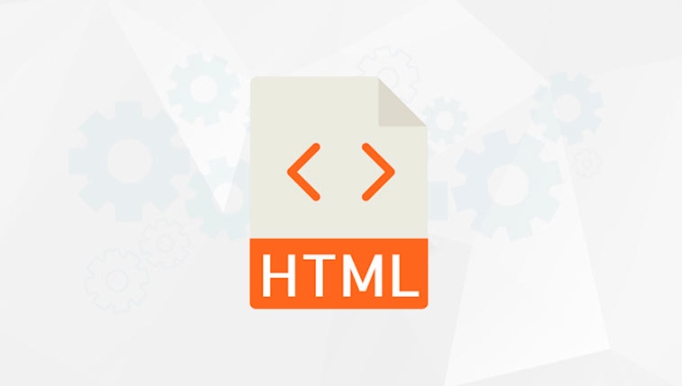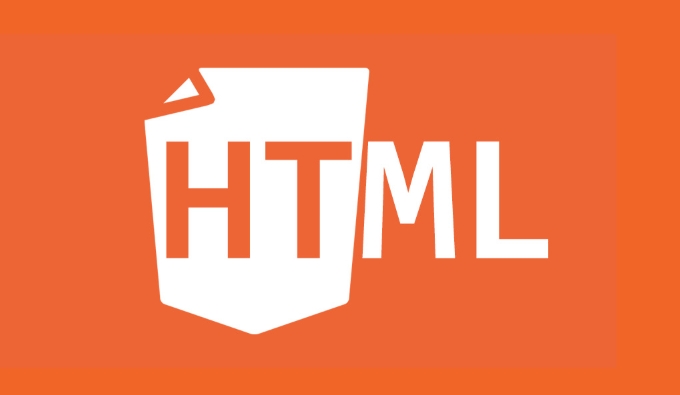To ensure that the HTML code complies with the standards can be achieved in four ways: 1. Use online verification tools such as W3C Markup Validation Service to quickly check for errors and prompt HTTPS support; 2. Install HTML verification plug-in in the IDE to achieve real-time feedback and custom rules; 3. Use command line tools html-validate or tidy for automated batch verification and integrate with CI/CD; 4. Pay attention to hidden problems such as case mixing, label not closed, etc., and maintain good coding habits to improve compatibility and SEO performance.

In web development, it is very important to ensure that HTML code complies with standards. It not only improves the compatibility of pages in different browsers, but also allows search engines to better crawl content. To achieve this, HTML standardized verification tools and techniques are required.

1. Use the online HTML verification tool
The easiest way is to use online HTML verification services, such as W3C's official Markup Validation Service . This type of tool can quickly check whether your HTML code complies with the standards and indicate errors or warning messages.
- Enter the web address, or paste the code directly
- It will list all places that do not comply with the specification, including label not closed, attribute writing errors, etc.
- Especially suitable for beginners or scenarios where problems need to be quickly investigated
It should be noted that some online tools do not fully support HTTPS. If your website has SSL enabled, it is recommended to choose a verification platform that supports HTTPS.

2. Integrated Development Environment (IDE) Plug-in
If you are used to writing code locally, you can install the HTML verification plugin in a commonly used editor. For example, install "HTMLHint" or "IntelliSense for CSS class names in HTML" in VS Code, which can prompt questions in real time as you write your code.
The benefits of these plugins are:

- Real-time feedback, write and check errors
- Supports custom rules, such as whether certain tags or attributes are allowed
- Reduce problems that are discovered before going online
However, the accuracy of the plugin depends on configuration and version updates, and it is recommended to check the plugin settings regularly to ensure the latest HTML standard rules are used.
3. Automatic verification of command line tools
For team collaboration or continuous integration processes, automated verification is more efficient using command-line tools. Tools like html-validate or tidy can be embedded in the build process, ensuring that the HTML submitted is verified.
For example, you can run a simple check like this:
npx html-validate index.html
The advantages of this approach are:
- Multiple files can be processed in batches
- Can be combined with CI/CD process to automatically intercept unqualified code submissions
- More flexible and supports scripted processing
But this also requires developers to have some experience in command line operation and be able to understand the output log information.
4. Pay attention to hidden FAQs
Some HTML problems are not easy to detect, such as mixed case use, extra spaces, wrong nested structures, etc. While these won't cause a complete crash on the page, they may affect performance or SEO.
For example, the following writing method is prone to problems:
<div><p>Some text</div>
The <p></p> tag is not closed correctly here, which may cause rendering exceptions.
It is recommended to maintain good formatting habits when writing code, such as consistent indentation and clear label pairing, so that problems can be discovered even without the help of tools.
Basically these are the methods. HTML verification doesn't seem complicated, but it's easy to ignore. Mastering a few practical tools and adding a little good habits can lead to cleaner, standard code.
The above is the detailed content of HTML Standard Validation Tools and Techniques. For more information, please follow other related articles on the PHP Chinese website!

Hot AI Tools

Undress AI Tool
Undress images for free

Undresser.AI Undress
AI-powered app for creating realistic nude photos

AI Clothes Remover
Online AI tool for removing clothes from photos.

Clothoff.io
AI clothes remover

Video Face Swap
Swap faces in any video effortlessly with our completely free AI face swap tool!

Hot Article

Hot Tools

Notepad++7.3.1
Easy-to-use and free code editor

SublimeText3 Chinese version
Chinese version, very easy to use

Zend Studio 13.0.1
Powerful PHP integrated development environment

Dreamweaver CS6
Visual web development tools

SublimeText3 Mac version
God-level code editing software (SublimeText3)

Hot Topics
 1793
1793
 16
16
 1735
1735
 56
56
 1587
1587
 29
29
 267
267
 587
587
 How do I minimize the size of HTML files?
Jun 24, 2025 am 12:53 AM
How do I minimize the size of HTML files?
Jun 24, 2025 am 12:53 AM
To reduce the size of HTML files, you need to clean up redundant code, compress content, and optimize structure. 1. Delete unused tags, comments and extra blanks to reduce volume; 2. Move inline CSS and JavaScript to external files and merge multiple scripts or style blocks; 3. Simplify label syntax without affecting parsing, such as omitting optional closed tags or using short attributes; 4. After cleaning, enable server-side compression technologies such as Gzip or Brotli to further reduce the transmission volume. These steps can significantly improve page loading performance without sacrificing functionality.
 How has HTML evolved over time, and what are the key milestones in its history?
Jun 24, 2025 am 12:54 AM
How has HTML evolved over time, and what are the key milestones in its history?
Jun 24, 2025 am 12:54 AM
HTMLhasevolvedsignificantlysinceitscreationtomeetthegrowingdemandsofwebdevelopersandusers.Initiallyasimplemarkuplanguageforsharingdocuments,ithasundergonemajorupdates,includingHTML2.0,whichintroducedforms;HTML3.x,whichaddedvisualenhancementsandlayout
 How do I use the element to represent the footer of a document or section?
Jun 25, 2025 am 12:57 AM
How do I use the element to represent the footer of a document or section?
Jun 25, 2025 am 12:57 AM
It is a semantic tag used in HTML5 to define the bottom of the page or content block, usually including copyright information, contact information or navigation links; it can be placed at the bottom of the page or nested in, etc. tags as the end of the block; when using it, you should pay attention to avoid repeated abuse and irrelevant content.
 How do I use the tabindex attribute to control the tab order of elements?
Jun 24, 2025 am 12:56 AM
How do I use the tabindex attribute to control the tab order of elements?
Jun 24, 2025 am 12:56 AM
ThetabindexattributecontrolshowelementsreceivefocusviatheTabkey,withthreemainvalues:tabindex="0"addsanelementtothenaturaltaborder,tabindex="-1"allowsprogrammaticfocusonly,andtabindex="n"(positivenumber)setsacustomtabbing
 How do I create text areas in HTML using the element?
Jun 25, 2025 am 01:07 AM
How do I create text areas in HTML using the element?
Jun 25, 2025 am 01:07 AM
To create HTML text areas, use elements, and customize them through attributes and CSS. 1. Use basic syntax to define the text area and set properties such as rows, cols, name, placeholder, etc.; 2. You can accurately control the size and style through CSS, such as width, height, padding, border, etc.; 3. When submitting the form, you can identify the data through the name attribute, and you can also obtain the value for front-end processing.
 What is the declaration, and what does it do?
Jun 24, 2025 am 12:57 AM
What is the declaration, and what does it do?
Jun 24, 2025 am 12:57 AM
Adeclarationisaformalstatementthatsomethingistrue,official,orrequired,usedtoclearlydefineorannounceanintent,fact,orrule.Itplaysakeyroleinprogrammingbydefiningvariablesandfunctions,inlegalcontextsbyreportingfactsunderoath,andindailylifebymakingintenti
 How do I use the and elements to provide a caption for an image?
Jun 24, 2025 am 12:45 AM
How do I use the and elements to provide a caption for an image?
Jun 24, 2025 am 12:45 AM
The standard way to add titles to images in HTML is to use and elements. 1. The basic usage is to wrap the image in the tag and add a title inside it, for example: this is the title of the image; 2. The reasons for using these two tags include clear semantics, convenient style control, and strong accessibility, which helps the browser, crawler and screen readers to understand the content structure; 3. Notes include that it can be placed up and down but needs to maintain logical order, cannot replace the alt attribute, and can contain multiple media elements to form a whole unit.
 Applying Semantic Structure with article, section, and aside in HTML
Jul 05, 2025 am 02:03 AM
Applying Semantic Structure with article, section, and aside in HTML
Jul 05, 2025 am 02:03 AM
The rational use of semantic tags in HTML can improve page structure clarity, accessibility and SEO effects. 1. Used for independent content blocks, such as blog posts or comments, it must be self-contained; 2. Used for classification related content, usually including titles, and is suitable for different modules of the page; 3. Used for auxiliary information related to the main content but not core, such as sidebar recommendations or author profiles. In actual development, labels should be combined and other, avoid excessive nesting, keep the structure simple, and verify the rationality of the structure through developer tools.




